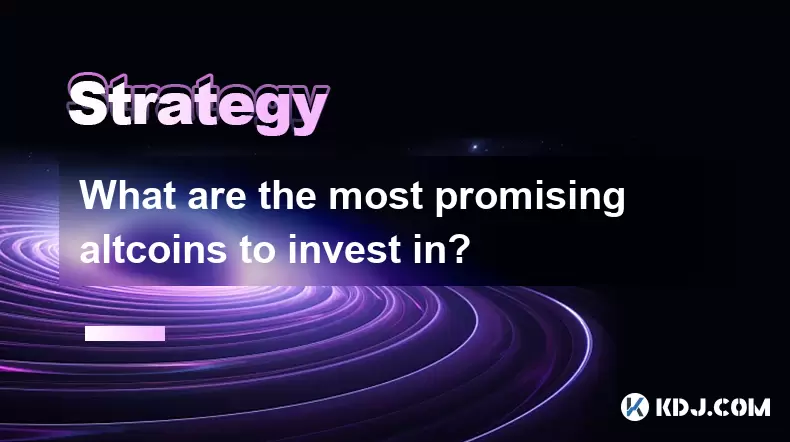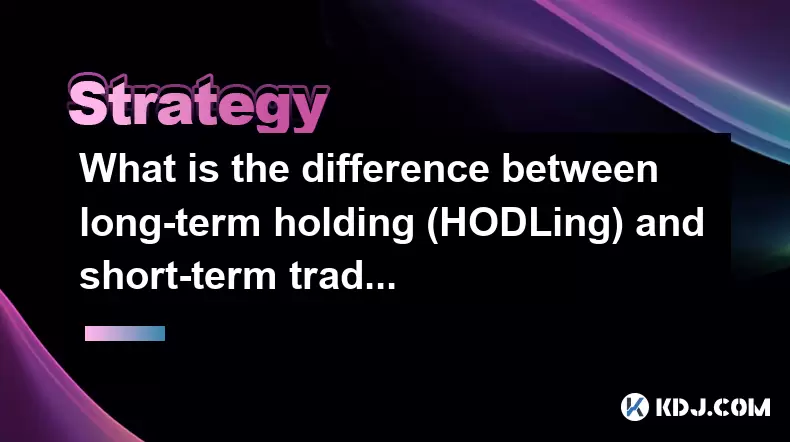-
 Bitcoin
Bitcoin $118000
0.40% -
 Ethereum
Ethereum $4525
2.14% -
 XRP
XRP $3.111
0.18% -
 Tether USDt
Tether USDt $1.001
0.00% -
 BNB
BNB $857.7
2.51% -
 Solana
Solana $192.7
1.99% -
 USDC
USDC $0.9999
-0.01% -
 Dogecoin
Dogecoin $0.2372
2.81% -
 Cardano
Cardano $0.9621
4.53% -
 TRON
TRON $0.3550
1.92% -
 Chainlink
Chainlink $25.91
14.15% -
 Hyperliquid
Hyperliquid $46.75
0.08% -
 Stellar
Stellar $0.4288
0.33% -
 Sui
Sui $3.817
1.25% -
 Bitcoin Cash
Bitcoin Cash $585.5
-0.31% -
 Ethena USDe
Ethena USDe $1.001
0.00% -
 Hedera
Hedera $0.2545
0.88% -
 Avalanche
Avalanche $25.26
4.03% -
 Litecoin
Litecoin $121.4
0.85% -
 Toncoin
Toncoin $3.502
1.28% -
 UNUS SED LEO
UNUS SED LEO $9.588
1.89% -
 Shiba Inu
Shiba Inu $0.00001315
1.21% -
 Uniswap
Uniswap $11.19
1.40% -
 Polkadot
Polkadot $4.099
3.12% -
 Dai
Dai $1.000
0.00% -
 Bitget Token
Bitget Token $4.694
1.31% -
 Cronos
Cronos $0.1518
0.03% -
 Monero
Monero $269.7
6.61% -
 Ethena
Ethena $0.7200
-1.56% -
 Pepe
Pepe $0.00001128
1.97%
Review of currency trading band skills
Understanding currency trading bands involves identifying the range within which a currency pair's price is expected to fluctuate, using horizontal lines to define upper, lower, and middle bands.
Jan 11, 2025 at 06:22 pm

Key Points
- Understanding Currency Trading Bands
- Identifying Breakout Patterns
- Managing Risk with Support and Resistance Levels
- Utilizing Volume Indicators to Confirm Trends
- Psychological Factors in Band Trading
- Advanced Band Trading Strategies
Review of Currency Trading Band Skills
Understanding Currency Trading Bands
Currency trading bands refer to the range within which a currency pair's price is expected to fluctuate. They are defined by three horizontal lines: the upper band, the lower band, and the middle (median) band. Traders use bands to identify potential breakout opportunities and manage risk.
To construct trading bands, Bollinger Bands are commonly used. Bollinger Bands are calculated using the following formula:
- Upper Band: Middle Band + 2 * Standard Deviation
- Middle Band: Simple Moving Average (SMA) of the price
- Lower Band: Middle Band - 2 * Standard Deviation
The width of the bands, as measured by the standard deviation, indicates market volatility. Expanding bands suggest increased volatility, while contracting bands indicate reduced volatility.
Identifying Breakout Patterns
Breakout patterns occur when the price of a currency pair breaks out of the upper or lower band, signaling a potential trend reversal or continuation. Breakout confirmation is crucial before entering a trade.
When the price breaks above the upper band, an upward breakout occurs, indicating a potential bullish trend. Conversely, a downward breakout occurs when the price breaks below the lower band, indicating a potential bearish trend.
False breakouts can also occur, where the price initially breaks out but reverses back within the bands. Therefore, traders should wait for confirmation before entering a trade, such as a retest of the breakout level or a change in momentum.
Managing Risk with Support and Resistance Levels
Support and resistance levels play a vital role in band trading. Support refers to a price level at which a currency pair bounces back upward, indicating buying pressure. Resistance refers to a price level at which a currency pair faces selling pressure and reverses downward.
Band breakouts often occur near support or resistance levels. Traders can use these levels to place stop-loss orders to limit potential losses if the trade does not go as expected. Support and resistance levels also help traders identify potential reversal points for trend changes.
Utilizing Volume Indicators to Confirm Trends
Volume indicators, such as the Moving Average Convergence Divergence (MACD) or Volume Weighted Average Price (VWAP), can help traders confirm the strength of a breakout or trend.
When the price breaks out of a band and is accompanied by high volume, it suggests that the breakout is genuine and has greater momentum. Low volume breakouts, on the other hand, may indicate a weaker trend or false breakout.
Psychological Factors in Band Trading
Psychological factors can influence band trading and impact decision-making. Understanding these factors can help traders avoid emotional biases and improve their trading performance.
- Fear: Fear of missing out (FOMO) or the fear of losing money can lead to impulsive trades and poor risk management.
- Greed: The desire to maximize profits can lead to overtrading or holding positions for too long, increasing the risk of reversal.
- Confirmation bias: Traders may seek information that confirms their existing beliefs, ignoring contrary evidence.
Advanced Band Trading Strategies
Beyond basic band trading, traders can employ more advanced strategies to enhance their returns and manage risk.
- Multiple Time Frame Analysis: Applying band analysis to different time frames can provide insights into short-term and long-term trends.
- Directional Breakout: Trading breakouts only in the direction of the underlying trend, based on technical indicators like moving averages or trend lines.
- Mama and Papa Bands: Using Bollinger Bands with different time frames and standard deviations to identify potential reversal patterns.
- Ichimoku Cloud: Utilizing a combination of lagging and leading indicators to identify potential trading opportunities within band boundaries.
FAQs
- What is the optimal Bollinger Band standard deviation?
Answer: There is no definitive optimal standard deviation for Bollinger Bands, as it depends on market volatility and the trader's preferences. However, typical values range from 1 to 3, with higher values indicating greater market volatility.
- How do you determine the strength of a band breakout?
Answer: The strength of a band breakout can be assessed by considering the volume, momentum indicators, and any underlying support or resistance levels. High volume breakouts, positive momentum, and a breakout near a support or resistance level suggest a stronger breakout.
- What are some common pitfalls in band trading?
Answer: Common pitfalls in band trading include false breakouts, emotional influences, and overtrading. False breakouts can occur due to increased volatility or market manipulation. Emotional influences, such as fear and greed, can lead to poor decision-making. Overtrading refers to placing too many trades or holding positions for too long, increasing the risk of loss.
- How do you manage risk in band trading?
Answer: Risk management in band trading involves using stop-loss orders, position sizing, and managing drawdowns. Stop-loss orders limit potential losses in the event of a price reversal. Position sizing ensures that the size of the trade is appropriate for the trader's risk tolerance and account balance. Managing drawdowns refers to the techniques used to minimize the impact of losing trades.
- What is the psychological impact of band trading?
Answer: Band trading can have a significant psychological impact on traders. The constant monitoring of bands and the anticipation of breakouts can lead to stress and emotional biases. Understanding psychological factors, such as fear and greed, is crucial for maintaining a level-headed approach.
Disclaimer:info@kdj.com
The information provided is not trading advice. kdj.com does not assume any responsibility for any investments made based on the information provided in this article. Cryptocurrencies are highly volatile and it is highly recommended that you invest with caution after thorough research!
If you believe that the content used on this website infringes your copyright, please contact us immediately (info@kdj.com) and we will delete it promptly.
- Kazakhstan's Crypto Leap: Bitcoin ETF and Central Asia's Digital Finance Future
- 2025-08-13 12:45:19
- BlockDAG Presale Blazes Past $371M: Fundraising Frenzy Fuels Crypto Sensation
- 2025-08-13 13:05:21
- Meme Coins: Chasing the 2025 Surge – Which Will Moonshot?
- 2025-08-13 10:25:23
- Bitcoin's Wild Ride: Rally, Pullback, and What's Next
- 2025-08-13 10:25:23
- Bitcoin, Bitmax, and Institutional Demand: A New Era of Crypto Investment
- 2025-08-13 10:45:12
- Solana, ROAM, and Airdrops: What's the Buzz in 2025?
- 2025-08-13 11:35:13
Related knowledge

How to use stop-loss orders to limit potential losses?
Aug 08,2025 at 02:01pm
Understanding Stop-Loss Orders in Cryptocurrency TradingA stop-loss order is a risk management tool used by traders to automatically sell a cryptocurr...

What are the most promising altcoins to invest in?
Aug 10,2025 at 11:42am
Understanding the Role of Private Keys in Cryptocurrency WalletsIn the world of cryptocurrency, private keys are the cornerstone of ownership and cont...

Should I invest in Bitcoin or altcoins?
Aug 13,2025 at 11:35am
Understanding Bitcoin and AltcoinsWhen deciding whether to invest in Bitcoin or altcoins, it's essential to first understand what each represents. Bit...

What are the most important metrics to look at when evaluating a cryptocurrency?
Aug 13,2025 at 11:36am
Market Capitalization: Understanding the Total ValueWhen evaluating a cryptocurrency, market capitalization is one of the most foundational metrics. T...

How to read cryptocurrency charts and use technical analysis?
Aug 08,2025 at 11:08am
Understanding the Basics of Cryptocurrency ChartsCryptocurrency charts are graphical representations of price movements over time. These charts are es...

What is the difference between long-term holding (HODLing) and short-term trading?
Aug 10,2025 at 05:30pm
Understanding HODLing in the Cryptocurrency SpaceThe term HODL originated from a typo in a 2013 Bitcoin forum post and has since become a widely accep...

How to use stop-loss orders to limit potential losses?
Aug 08,2025 at 02:01pm
Understanding Stop-Loss Orders in Cryptocurrency TradingA stop-loss order is a risk management tool used by traders to automatically sell a cryptocurr...

What are the most promising altcoins to invest in?
Aug 10,2025 at 11:42am
Understanding the Role of Private Keys in Cryptocurrency WalletsIn the world of cryptocurrency, private keys are the cornerstone of ownership and cont...

Should I invest in Bitcoin or altcoins?
Aug 13,2025 at 11:35am
Understanding Bitcoin and AltcoinsWhen deciding whether to invest in Bitcoin or altcoins, it's essential to first understand what each represents. Bit...

What are the most important metrics to look at when evaluating a cryptocurrency?
Aug 13,2025 at 11:36am
Market Capitalization: Understanding the Total ValueWhen evaluating a cryptocurrency, market capitalization is one of the most foundational metrics. T...

How to read cryptocurrency charts and use technical analysis?
Aug 08,2025 at 11:08am
Understanding the Basics of Cryptocurrency ChartsCryptocurrency charts are graphical representations of price movements over time. These charts are es...

What is the difference between long-term holding (HODLing) and short-term trading?
Aug 10,2025 at 05:30pm
Understanding HODLing in the Cryptocurrency SpaceThe term HODL originated from a typo in a 2013 Bitcoin forum post and has since become a widely accep...
See all articles

























































































